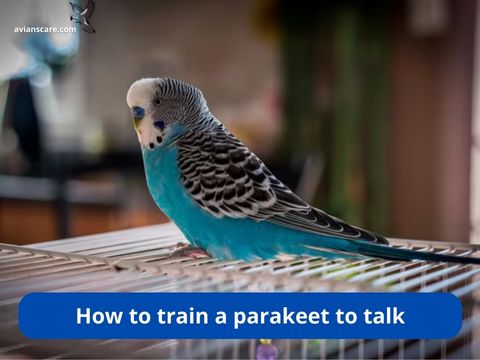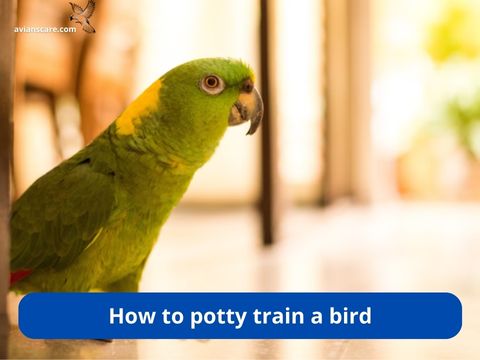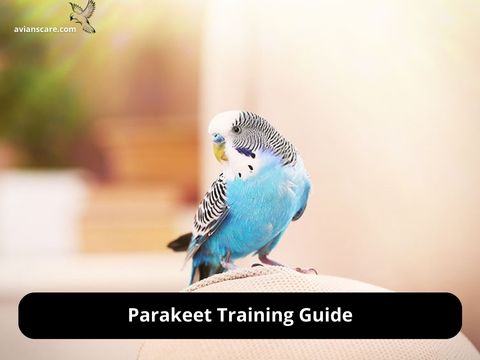How to train a parakeet to talk
Having a parakeet that can talk is not only entertaining but also a testament to the strong bond between you and your feathery friend. Training a parakeet to talk requires patience, dedication, and a clear understanding of the process. In this guide, we’ll explore step by step how you can teach your parakeet to mimic words and phrases, creating a unique and delightful companion.
Choosing the Right Parakeet
Before diving into training, it’s essential to choose a parakeet with the potential to talk. While not all parakeets have this ability, some species, like the Budgerigar, are more inclined towards vocalization. Look for a parakeet that shows curiosity, as this trait often correlates with a willingness to learn.
Creating the Ideal Environment
To foster a conducive learning atmosphere, ensure your parakeet has a comfortable and stimulating environment. Provide a spacious cage with toys and perches, as mental stimulation is crucial for talking parakeets. A happy and relaxed parakeet is more likely to engage in the training process.
Building a Bond with Your Parakeet
Establishing trust and familiarity is the foundation of successful training. Spend time with your parakeet daily, allowing it to become accustomed to your presence. Offer treats from your hand and speak in soothing tones to build a positive association.
Basic Training Techniques
Start with simple words and phrases, using repetition to reinforce learning. Choose words with clear syllables, and be consistent in your delivery. Your parakeet may initially mimic tones before mastering the actual words, so be patient during this learning phase.
Consistent Practice Schedule
Consistency is key in parakeet training. Set a regular practice schedule, preferably during periods when your parakeet is most active. Short, frequent sessions are more effective than long, infrequent ones. This routine helps establish a pattern for your parakeet to follow.
Utilizing Positive Reinforcement
Positive reinforcement, such as offering treats or praise, reinforces the association between words and rewards. Use a cheerful tone when your parakeet successfully mimics a word, creating a positive and enjoyable learning experience.
Expanding Vocabulary
Gradually introduce new words to expand your parakeet’s vocabulary. Repeat the words frequently, and soon, your parakeet will start incorporating them into its repertoire. Be attentive to its progress, adjusting the pace according to its comfort level.
Socializing Your Parakeet
Expose your parakeet to different voices and environments. This helps prevent it from mimicking only one person and encourages a diverse range of vocalizations. Socializing also contributes to a well-adjusted and confident talking parakeet.
Overcoming Challenges
Not all parakeets take to talking immediately. Some may show resistance or exhibit setbacks. Be patient and gentle, adapting your approach to suit your parakeet’s personality. Consistent positive reinforcement will help overcome these challenges.
Advanced Training Techniques
Once your parakeet has mastered basic words, you can introduce more complex phrases and even teach it tricks. This advanced training not only keeps your parakeet mentally stimulated but also deepens the bond between you.
Patience and Perseverance
Training a parakeet to talk is a gradual process that requires time and persistence. Celebrate small victories, and remember that each parakeet learns at its own pace. Your patience will be rewarded with a chatty and delightful companion.
Monitoring Health and Well-being
Pay close attention to your parakeet’s behavior and vocalizations. Changes in speech patterns or a sudden lack of interest in training could signal stress or illness. Regular veterinary check-ups ensure your parakeet remains healthy and happy.
Celebrating Milestones
Acknowledge your parakeet’s achievements throughout the training journey. Whether it’s mastering a new word or performing a trick, celebrate these milestones with enthusiasm. Positive reinforcement and encouragement are crucial for sustained learning.
Conclusion
In conclusion, training a parakeet to talk is a rewarding endeavor that strengthens the bond between you and your feathered friend. With patience, positive reinforcement, and a consistent training routine, you can enjoy the delightful company of a talking parakeet. Remember that each parakeet is unique, so tailor your approach to suit its personality and pace of learning.
FAQs
- How long does it take to train a parakeet to talk?
- Training duration varies, but with consistent effort, some parakeets may start mimicking words within a few weeks.
- What if my parakeet doesn’t show interest in talking?
- Be patient and try different approaches. Some parakeets take longer to warm up to the idea of talking.
- Can all parakeets be trained to talk?
- While some species are more inclined to talk, individual personalities play a significant role. Not all parakeets may develop talking skills.
- Is there an ideal age to start parakeet training?
- It’s best to start training when the parakeet is young, as they tend to be more receptive to learning.
- How do I prevent my parakeet from picking up undesirable words?
- Monitor the words and phrases you use around your parakeet, as they may mimic anything they hear regularly.





